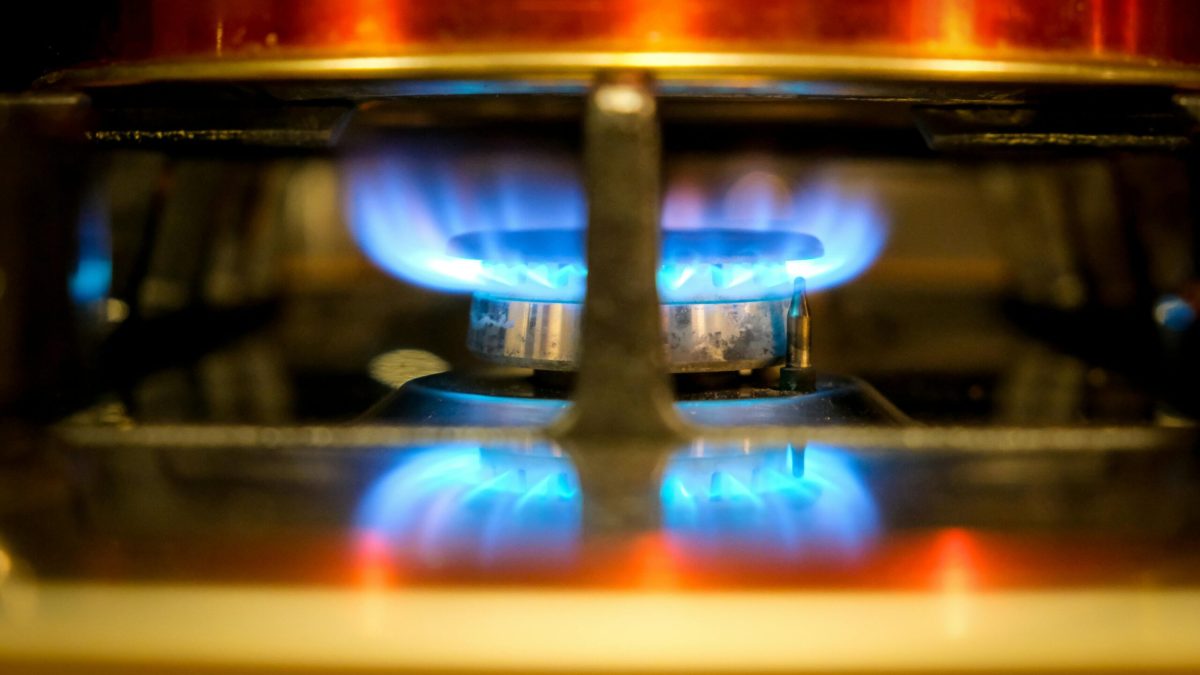The increased competition for liquified natural gas (LNG) supplies, driven by a larger consumer base, could result in Europe facing escalated prices for this essential energy source.
This situation highlights the economic implications of supply and demand dynamics within the energy market, where a surge in demand can lead to price hikes, impacting the affordability and accessibility of LNG for European consumers.
Driven by the anticipation of freezing temperatures in North-West Europe this week and next, the Dutch TTF natural gas price surged over 4% to EUR 58.7 per megawatt-hour (MWh) at the start of the week, reaching a two-year high.
Consequently, the sharp decline in natural gas stocks across the EU is expected to persist.
Prices have since then cooled somewhat, but remained near the EUR 50 per MWh level.
Furthermore, due to Russian attacks on Ukrainian gas infrastructure, Ukraine has been importing natural gas from neighboring European countries in recent days.
Storage
The GIE reports that the EU natural gas storage facility is currently 18 percentage points lower than at the same time last year and 5 percentage points lower than the five-year average, sitting at just 48.5% full.
Gas Infrastructure Europe is an association that represents European gas infrastructure operators.
GIE’s members are involved in the transmission, storage, and regasification of natural gas, hydrogen, and other low-carbon gases.
At the end of the withdrawal period last year, inventories were still 10 percentage points higher than at present.
“As there are still around seven weeks to go until the end of the withdrawal period, the filling level will fall further,” Carsten Fritsch, commodity analyst at Commerzbank AG, said.
According to Bruegel, EU gas storage was at 47% capacity, with Ukrainian storage at 9%, its lowest level in two years as of Thursday.
Rising energy demand
The consulting firm ICIS expects gas demand in Europe to be 17% higher in February compared to the previous year and a filling level of 37% at the end of the winter, according to a Commerzbank report.
“This would be the lowest level since the end of winter 2021/22, when an unusually low level of 80% at the beginning of the winter was responsible for this,” Fritsch said.
“A comparison with the winter of 2020/21 is therefore more appropriate, when the filling level of EU gas stocks fell from 95% to just under 30% over the course of the winter months.”
Gas prices rose significantly in autumn 2021 due to the inability to fully restock for the following winter at that time.
The cessation of Russian pipeline gas deliveries through Ukraine has driven up demand for LNG in Europe.
This has resulted in North-East Asian spot LNG prices reaching their highest point since November 2023.
“In week 6 of 2025, European gas imports rose and exceeded 2024 weekly import levels,” analysts at Bruegel said in a report.
“This was driven by higher liquified natural gas (LNG) imports. Russian gas flows via the Turkstream pipeline are reaching Europe at a record weekly level,” they said.
Current concerns regarding US LNG exports
There are growing apprehensions that the availability of LNG from the US to the European Union might decrease in the future.
This potential decline is linked to the possibility of multiple countries committing to purchase US LNG to avoid potential US tariffs.
Such commitments could result in reduced US LNG exports available for the EU market.
Furthermore, this situation highlights the intricate relationship between international trade, energy resources, and political strategies.
The threat of tariffs can influence purchasing decisions and reshape global energy supply chains.
This can lead to a shift in how LNG is traded and potentially create challenges for countries reliant on US LNG imports, particularly the EU.
In an effort to reduce the trade surplus, Japan’s Prime Minister recently pledged to increase purchases of LNG from the US.
India may also be following suit, as some Indian energy companies are reportedly considering purchasing US LNG, according to the Indian oil minister.
According to people familiar with the matter, longer-term purchase agreements and stakes in US LNG projects are also being discussed, according to Commerzbank.
Although China imposed a 10% tariff on US LNG on Monday, which will likely decrease Chinese imports, reports indicated that traders are seeking waivers from Beijing.
Implications
Fritsch said:
The bottom line is that Europe could have to pay higher prices because more consumers are competing for the LNG supply.
As reported by the US Energy Information Administration, US natural gas inventories are currently 2.8% below the 5-year average.
At the beginning of the withdrawal period in November, they were still 6% higher. “The gas supply in the USA has therefore also become tighter.” Fritsch noted.
“The nervousness on the gas market is therefore understandable.”
The current price levels in Europe are high enough to attract LNG deliveries from regions that typically supply Asia.
For example, LSEG data shows that two LNG tankers from Oman and one from Australia are currently heading to Europe, Commerzbank’s report showed.
“The flow of Russian gas has (also) drawn attention, as have soaring energy prices, largely caused by a tight natural gas market.,” Bruegel analysts said.
The post Analysis: why Europe may be forced to pay more for gas? appeared first on Invezz

